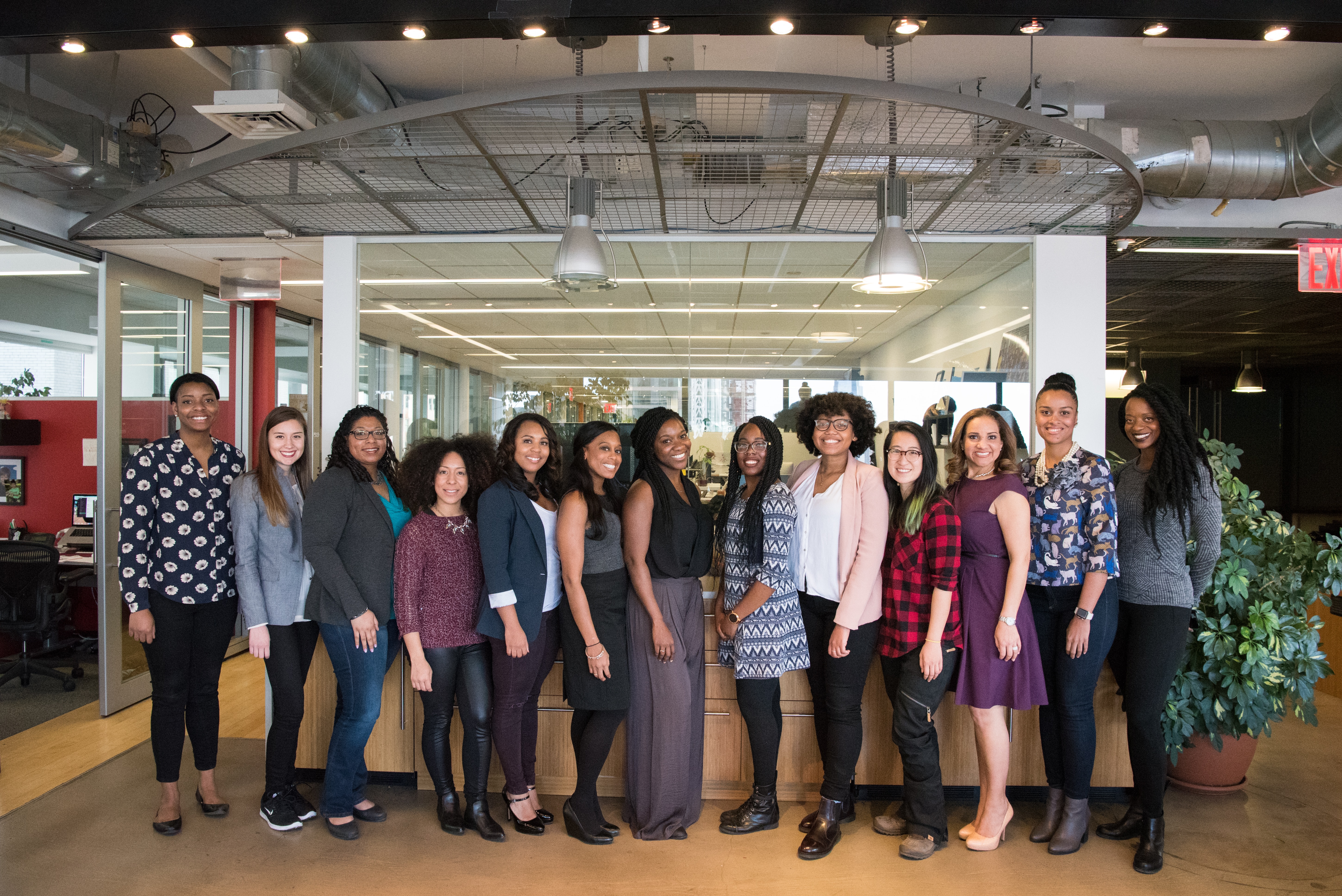Leading people is no small feat, especially when you’re at the helm of a vast organization. As someone responsible for steering People Strategy in big enterprises, you’ve undoubtedly felt the weight of ensuring that every team member, from the fresher to the veteran, feels seen and heard. It’s not just about empathy; it’s about business. Research consistently shows that companies that actively foster a sense of belonging and inclusivity tend to outperform their competitors.
What happens when employees are heard and cared for in ways that are meaningful to them?
The best companies experience half the turnover as their peers and have employees who are six times more likely to help recruit talent. Eighty percent of employees on the best companies list look forward to coming to work and feel psychologically and emotionally healthy. Ninety percent say their company is a great place to work, and they feel cared for. At average workplaces, 52% of employees feel management sincerely cares about them as a person, and 57% say their workplace is great. – Michael C. Bush
But how do we translate this knowledge into actionable insights and strategies? Drawing from real-life stories and grounded in expertise, this piece is tailored to help people leaders like you navigate these waters with confidence.
Key Takeaways
- The Business Case for Belonging: Companies prioritizing belonging consistently outperform rivals with lower turnover and greater productivity, potentially saving millions annually.
- Employee Well-being: A culture of psychological safety boosts innovation, reduces stress, and improves job satisfaction and health.
- Retaining Leads To Loyalty: A strong sense of belonging is pivotal in reducing turnover and retaining invaluable expertise in the organization.
- Inclusivity Beyond Team Cohesion: It’s essential to value every employee’s uniqueness, ensuring all feel seen and valued regardless of demographics.
- Intentional Actions to Create Belonging: Strategic efforts, like appreciating individual contributions and empowering decision-making, create an environment where everyone thrives.

Why is Belonging So Important in the Workplace?
1. Enhancing Psychological Safety Fosters Better Employee Well-being
A culture that promotes psychological safety is at the heart of every thriving organization. This term, popularized by organizational behavioral scientist Amy Edmondson, underscores the value of an environment where individuals feel comfortable taking interpersonal risks. But what does this have to do with belonging?
Belonging is more than just fitting in; it’s about feeling safe to be one’s authentic self without the fear of retribution or ostracization. When employees genuinely feel they belong, they are more likely to voice their opinions, express concerns, and share innovative ideas. This is deeply intertwined with their mental health and overall fulfillment.
An environment lacking in belonging can lead to feelings of isolation, stress, and burnout, ultimately hampering the mental wellness of the workforce. Recent studies suggest that employees in psychologically safe environments, characterized by mutual respect and trust, exhibit better health, lower stress levels, and higher job satisfaction.
2. Elevate Employee Engagement and Increase Job Satisfaction
A deep sense of belonging doesn’t just enhance mental well-being—it also supercharges employee engagement and satisfaction. Think about it: When you feel valued, heard, and genuinely part of a team, aren’t you more motivated to give your best?
Employees who believe they belong are more likely to go the extra mile, display loyalty to their organizations, and commit to their roles. Their satisfaction is tied to their paycheck and the deeper, intrinsic reward of being part of something bigger. A survey from 2021 indicated that employees who felt a strong sense of belonging were twice as likely to be highly engaged in their roles compared to those who did not.
3. Improve Retention Rates and Reduce Turnover
Retention is a pain point for many large organizations. Hiring high-potential employees is one thing, but retaining them? That’s a different ball game. Here’s where the magic of belonging plays a crucial role.
Employees who don’t feel they belong or are not valued are more likely to seek opportunities elsewhere. Most of the time, it’s not always about better compensation or a fancier job title. More often than not, the underlying reason is the lack of connection, recognition, or a sense of purpose in their current roles. Businesses that prioritize belonging can experience a significant drop in turnover rates, saving them not only monetary costs but also the invaluable experience and knowledge that employees carry with them.
4. Significant Surge in Overall Productivity
Lastly, let’s talk numbers. While belonging might seem like an abstract concept, its impact on productivity is tangible. Employees who feel they belong are not just happier; they’re more productive. They collaborate better with their peers, show increased creativity, and tackle challenges with greater resilience.
When employees genuinely experience belonging, the positive impact on an organization’s financial health is profound. A strong sense of belonging has been associated with a remarkable 56% boost in job performance, a notable 50% decrease in the likelihood of turnover, and an impressive 75% fewer sick days taken. To put this into perspective, for an organization with 10,000 staff members, these benefits translate to an annual financial saving exceeding $52M. – Harvard Business Review
The correlation is evident: when individuals feel valued and know their contributions matter, they bring their A-game to the table.

Free Playbook For Creating An Engaging Employee Experience even During Challenging Times
- What The Future Workplace Looks Like
- How To Activate Emotional Intelligence Within Your Team
- Factors Of Employee Motivation
- Strategies For Employee Engagement
- A Hybrid Work Model For Collaboration, Flexibility, & Fulfillment
- The Power Of Coaching In The Workplace
- How To Reduce The Impact Of Labour Turnover

Understanding the Current State of Your Company Culture
Understanding Workplace Belonging:
Fostering a sense of belonging in the workplace might sometimes come across as intangible or trivial. Perhaps you’ve questioned its significance, wondering, “Is it genuinely essential? How do I cultivate it, and how can its impact be measured?” The answer lies in our innate human desire: our yearning to connect, to be recognized, and to form bonds and attachments. This longing for belonging is a profound and primal motivator.
A Personal Reflection on Belonging:
Reflecting on my journey, working at Cloverleaf has been incredibly fulfilling. My immense pride in being associated with the organization stems from our achievements and the deep belonging I feel here. My teammates appreciate me for who I am, celebrating my unique attributes that, in different contexts, might have been perceived as “too much.” My enthusiasm, ambition, and compassion are accepted, celebrated, and harnessed here.
Still Not Convinced About The Importance Of Belonging? Consider This…
To understand the gravity of belonging, think back to your early years, perhaps junior high. For many, it was a time characterized by the intense desire to fit in and the crushing weight of exclusion when one didn’t.
Remember that feeling? The stark difference between the warmth of inclusion and the cold sting of isolation? That’s the magnitude of belonging we’re discussing here.
Belonging isn’t just about avoiding exclusion. It’s about the positive affirmations we receive when someone appreciates our quirks, laughs at our jokes, or supports our endeavors. It’s about feeling valued, cherished, and seen. In the workplace, it’s about recognizing every individual piece and understanding how indispensable it is to the bigger picture. That’s the essence and impact of belonging we aim to cultivate in our professional environments.
3 Areas Of Focus For Creating Belonging In The Workplace
1. Assess Your Employee Experience
Belonging isn’t just a term; it’s a heartfelt sentiment. It encapsulates the emotions of being seen, valued, and supported. Our day-to-day interactions play a crucial role in fostering this sentiment. It’s interwoven in the way people communicate, share ideas, and engage with one another during team meetings and even informal check-ins.
An effective way to understand this more deeply is by diving into the employee experience. You don’t need an elaborate survey or a webinar to start. Instead, initiate an open conversation with a teammate. Encourage them to share their experiences, perhaps shedding light on instances where they might’ve felt isolated or excluded. Discover their perspectives on these feelings and understand their methods of enduring such challenges. Such feedback is vital for our decision-making process to foster belonging.
Should you uncover instances of exclusion or isolation, it’s essential to correct this trajectory. By engaging in open communication, you can delve into the nuances of their experience. Ask them how they felt during these moments, how they managed, and what changes might enhance their well-being.
2. Appreciate The Uniqueness Of Each Individual On Your Team:
Remember, fostering a feeling of belonging is not just about team cohesion but also acknowledging and celebrating individuality. This act of recognizing each employee’s uniqueness—regardless of their demographics—is a testament to inclusive leadership and workplace culture.
Every individual wants their unique contributions to be seen and valued. By understanding and appreciating each teammate’s varied strengths, backgrounds, and personalities, we set a robust foundation for true inclusivity. Thus, belonging becomes about feeling seen, valued, and supported at every level.
3. Value Work-Life Balance
The surge in remote work has opened up new challenges and opportunities in fostering belonging. Physical distance might lead to feelings of disconnect, but ensuring that the culture of belonging permeates even virtual spaces is essential. Regular one-on-one’s, team-building activities, and open channels for team members to experience remote collaboration can bridge this gap.
When an employee says, “My uniqueness was seen, and my team valued it,” it’s a testament to the effectiveness of your initiatives, whether in a traditional office or a remote setting.
Moreover, maintaining a work-life balance directly impacts an employee’s overall sense of fulfillment and peace of mind. By recognizing the importance of this balance, especially in a hybrid work model, leaders can reinforce the values of support and understanding, essential components for fostering high belonging.
10 Ways for Leaders To Foster Belonging and Inclusivity in the Workplace
A sense of belonging doesn’t just emerge; it’s cultivated through intentional actions and strategies. This section delves into practical tips that leaders can integrate into their management repertoire, ensuring that each member feels anchored, valued, and an integral part of the collective team journey.

Foster Belonging through Team Building:
1.See, Acknowledge, and Value Uniqueness:
- Use resources like Cloverleaf to identify and acknowledge your team’s unique traits.
- Go beyond recognizing to actively appreciate their contributions. This might include public affirmations like a shout-out in a Slack channel.
- Instill a coaching approach to further draw out their best selves.
2. Support Growth and Provide Opportunities Aligned with Strengths:
- Use tools like CliftonStrengths to understand strengths and leverage them.
- Allow projects that ignite passion, tapping into individuals’ key strengths.
3. Engage in Authentic Conversations and Foster Genuine Presence:
- Encourage open dialogues about feelings, values, and authenticity.
- Prioritize genuine interaction, being fully present, and valuing the individual over the task.
4. Educate on the Value of Belonging and Balance with Productivity:
- Emphasize how feelings can drive change and enhance productivity.
- Recognize the balance needed between accomplishing tasks and valuing individuals.
5. Empower Employees to Shape Solutions:
- Engage in collaborative strategy-building for fostering belonging.
- Take feedback seriously, merging personal development opportunities with business needs.
6. Engage in Regular One-On-Ones:
- Facilitate both peer and manager-employee interactions to strengthen team bonds.
- Use themes or topics to guide deeper, more meaningful conversations.
7. Initiate Team-building Activities:
- Encourage cross-functional brainstorming.
- Host collective learning sessions like webinars for a shared experience.
8. Support Remote Collaboration and Engagement:
- Create space for informal chats on platforms like Zoom or Slack.
- Ensure proficiency with collaboration tools, offering regular training sessions.
9. Promote and Support Employee Resource Groups (ERGs):
- Highlight different ERGs monthly, sharing their achievements and goals.
- Encourage projects that align with both ERG goals and company culture.
10. Highlight Success Stories and Achievements:
- Share stories that emphasize the organization’s values in action.
- Provide platforms where team members can showcase moments of pride and support.
The steps outlined here serve as more than just directives; they’re a commitment to recognizing the multifaceted tapestry of individuals that make up a team. Leaders enhance productivity by valuing uniqueness, championing growth, creating spaces for authentic conversations, and crafting a nurturing environment where everyone thrives.
Final Thoughts
The heart of an organization lies not just in its operational excellence but in its culture. A culture of belonging is not merely a perk or a box to check off; it’s the lifeblood that fuels every contributor’s passion, commitment, and innovation. This sense of belonging, of feeling seen, valued, and supported, shapes not only individual fulfillment at work but the overall trajectory of a company.
To the leaders reading this: Your role transcends traditional HR tasks. You are the torchbearers of your organization’s culture. With the ever-evolving dynamics of the workplace, are we valuing the person for their work and as someone with intrinsic worth?
In the intricacies of your organization, every individual is a unique and essential piece. Your organization can truly realize its full potential when each person feels acknowledged, cherished, and valuable.





